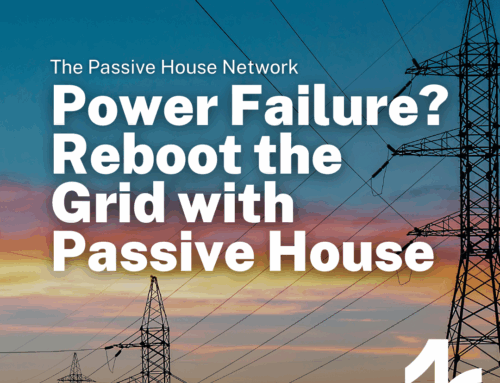Passive House
It’s Not Just for Houses
You might say it’s a frequently asked question, and with a name like Passive House, it’s no wonder. Often conjuring images of single-family suburbia, Passive House goes far beyond the neighborhood block. Check out these three recent builds that show you how Passive House can apply to any building for any purpose.
School is in Session: Passive House Lessons
With its ability to deliver fresh filtered air while blocking out noise and keeping occupants healthy and focused, Passive House is a natural choice for our schools. Architecture Research Office (ARO) has recently delivered a 146,000-square-foot primary and high school in Brooklyn, New York. The joint Elizabeth Jennings School for Bold Explorers and Khalil Gibran International Academy opened in September last year. It features classrooms with wide windows, an outdoor courtyard, and plenty of insulation that sees the building consume 75% less energy than similarly sized schools.
The building has another benefit: climate resilience. As New York sees hotter summers and more severe cold snaps, the Flatbush Avenue school will remain largely unaffected by the otherwise inevitable spike in their utility bill. Indoor temperatures will stay safer for longer during a power outage in extreme weather, meaning the building could be used as a public shelter. The tragedy of the recent fires in LA reveals another benefit reported by realtor.com: the building is likely to be more resilient to fire because of its Passive House design.
Fire-smart building goes hand-in-hand with Passive House, prioritizing a simple form, airtightness, high-performance windows, and high-performance ventilation systems that keep smoke and embers out of the interior, reducing opportunities for fire to ignite. These design principles were applied to a house in the Palisades that avoided the flames during the LA wildfires earlier this year, as well as a house that survived the Marshall Fire in Boulder, CO, in 2021. As wildfire events worsen due to climate change, it stands to good reason that we should be implementing these building principles across all of our buildings, especially schools.
Home Away from Home: Passive House Comfort On-the-Go
Located in New Haven, Connecticut, and developed by PHN Board Member Bruce Becker, Hotel Marcel is the first certified Passive House hotel in the United States. Created from a retrofit of a Brutalist office building, Hotel Marcel is an all-electric escape that prioritizes indoor comfort for the 165 suites, an on-site restaurant, and conference rooms inside.
Bruce recently spoke to Lodging Magazine about the certification process, highlighting the help that a Passive House certification does to encourage additional hotel conference business from organizations that care about sustainability. Hotels can be large energy consumers, so with the cost-saving opportunity that Passive House presents, other hoteliers will likely take note.
In retrofitting a building that might have otherwise been torn down, Hotel Marcel preserves energy, history, and a good night’s rest. The indoor comfort–including appropriate humidity, temperature, and fresh air–will send you off to a quick sleep, and your emissions-free stay will keep you resting easy.
Clocking In: The Answer to the Office Thermostat
The same comfort, resilience, and efficiency that works so well in Passive House homes, schools, and houses can also be applied to your place of work, as the Winthrop Center proves. Located in Boston, MA, the Winthrop Center is the world’s largest Certified Passive House Office Building. Designed by Handel Architects, Winthrop Center stands at 20 floors and 812,000 square feet, bringing unparalleled efficiency to the city of Boston. According to Architectural Record, a similar Class-A office building in the area uses 150% more energy than Winthrop Center, and the local LEED Platinum buildings use 60% more.
Passive House will likely play a role in more Boston buildings going forward since the standard’s energy-savings will help the city meet new emission-cutting requirements. While many buildings in Boston cannot use solar, geothermal, or other forms of renewable energy because of their design or location, Passive House is a design standard for every building–including libraries, factories, retirement homes, pickleball courts, and more.
The resilience, comfort, and efficiency of Passive House help to protect your community against rising prices, temperatures, and disasters. If you’re ready to ensure your designs will stand the test of time, be sure to register for our upcoming Certified Passive House Designer training on April 10th. Take your energy transition into your own hands–register now for immediate access to course materials.





